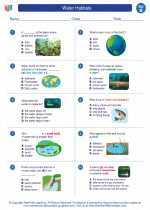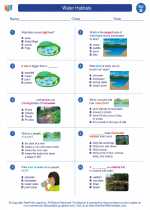Valleys
Valleys are low-lying areas of land between hills or mountains, often with a river or stream flowing through them. They are formed through a variety of geological processes and can have different shapes and sizes.
Formation of Valleys
Valleys can be formed through several different processes, including erosion by water, ice, or wind, as well as through tectonic activity. Some common types of valleys include:
- River Valleys: Formed by the erosion of a river cutting through the land over time, creating a V-shaped valley.
- Glacial Valleys: Carved out by glaciers as they move across the landscape, creating U-shaped valleys with steep sides and flat bottoms.
- Fault-Block Valleys: Created by tectonic forces causing blocks of the Earth's crust to drop down, forming elongated valleys between the fault lines.
Types of Valleys
Valleys can vary in shape and size, and different types of valleys can be found in different landscapes. Some common types of valleys include:
- V-Shaped Valleys: Formed by the erosion of rivers, resulting in steep, narrow valleys with a V-shaped cross-section.
- U-Shaped Valleys: Carved out by glaciers, creating wide valleys with steep sides and a flat bottom.
- Box Valleys: Characterized by straight sides and a flat bottom, often found in areas with resistant rock layers.
- Hangin Valleys: Formed by the erosion of smaller glaciers that join a larger main glacier, resulting in a tributary valley hanging above the main valley.
Study Guide
Here are some key points to remember when studying valleys:
- Understand the different processes that can lead to the formation of valleys, including erosion, glaciation, and tectonic activity.
- Be able to identify and describe the main types of valleys, such as V-shaped, U-shaped, box, and hanging valleys.
- Consider the role of rivers, glaciers, and tectonic forces in shaping and forming valleys.
- Explore the significance of valleys in terms of their ecological, geological, and human impact on the landscape.
Valleys are fascinating features of the Earth's surface, shaped by a range of natural processes and playing a crucial role in the formation of landscapes. Understanding the formation and characteristics of valleys can provide valuable insights into the Earth's dynamic geology.
[Valleys] Related Worksheets and Study Guides:
.◂Science Worksheets and Study Guides Second Grade. Water Habitats

 Activity Lesson
Activity Lesson
 Worksheet/Answer key
Worksheet/Answer key
 Worksheet/Answer key
Worksheet/Answer key
 Worksheet/Answer key
Worksheet/Answer key
 Worksheet/Answer key
Worksheet/Answer key
 Vocabulary/Answer key
Vocabulary/Answer key
 Vocabulary/Answer key
Vocabulary/Answer key
